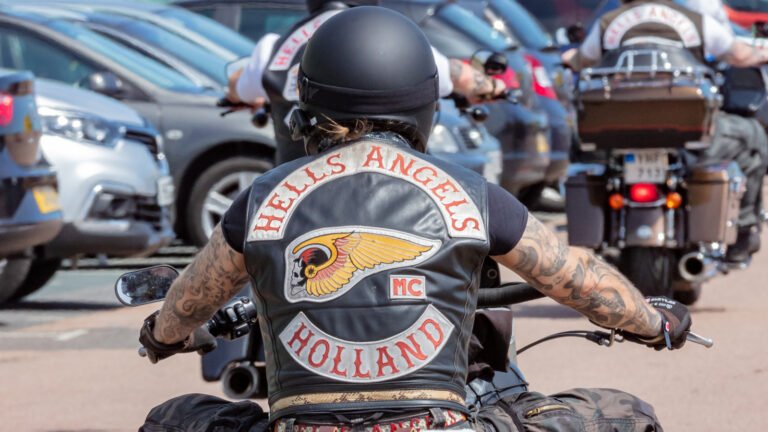BMI Calculator – Check your Body Mass Index for free!
What’s A Three-Piece Patch & Can Any Biker Wear One?
Ian_Stewart/Shutterstock
The sight of bikers wearing black vests adorned with a variety of patches is a historic part of highway scenery, not just in America, but around the world. This is especially true of three-piece patches typically featured on the back. The top patch, also called the top rocker, displays the club name that a rider belongs to. The bottom patch, or bottom rocker, is the club’s territory, and the middle patch, or center patch, is the club’s logo. However, just because these patches might look cool doesn’t mean just any rider should wear them.
Three-piece patches signify a biker is a full-fledged member of a club, meaning they’re governed by a club’s rules and regulations, whether or not the club is registered with the American Motorcycle Association (AMA). If someone chooses to wear a three-piece patch for their own reasons, it could become a dangerous situation, especially if the patch in question belongs to an outlaw club.
The three-piece patch originated with outlaw clubs in the late 1940s. These maverick bikers belonged to the infamous 1% who operated outside the 99% of those bikers deemed to be law-abiding and responsible by the established and more respected AMA. The combination of all three patches worn by the 1% became known as “colors,” and helped set California’s largest motorcycle club, the Hells Angels, and others, apart from the rest.
What motorcycle patches say about you as a rider
Tricky_Shark/Shutterstock
The number of patches you should wear on the back of your biker vest, or “cut,” varies based on the status of the motorcycle club you’re in. A one-piece patch often means your club belongs to the American Motorcycle Association, or AMA. A two-piece patch signals that you’re in a holding pattern until the club gives your specific charter permission to join. However, one patch could also mean that you’re not a member of a motorcycle club at all, or that you may belong to a rider club instead.
Patches worn by members of rider clubs communicate that you’re part of a social group that loves the open road, but not the rebellious lifestyle often linked to hardcore clubs. These patches typically don’t include offensive or obscene language, or any images too similar to those used by other clubs, which could make anyone wearing them a target of suspicion, retribution, or even arrest.
You should also be careful to stay away from getting political with your motorcycle patches. While not directly associated with outlaw clubs, such patches could spark a confrontation with other bikers who don’t agree with the message you’re displaying. Even patriotic patches could be a problem, especially if they lean too far to one side of the political spectrum. In the end, it’s best to be mindful of what you’re communicating with your patches and remain as respectful as you can with your choice.
BMI Calculator – Check your Body Mass Index for free!

